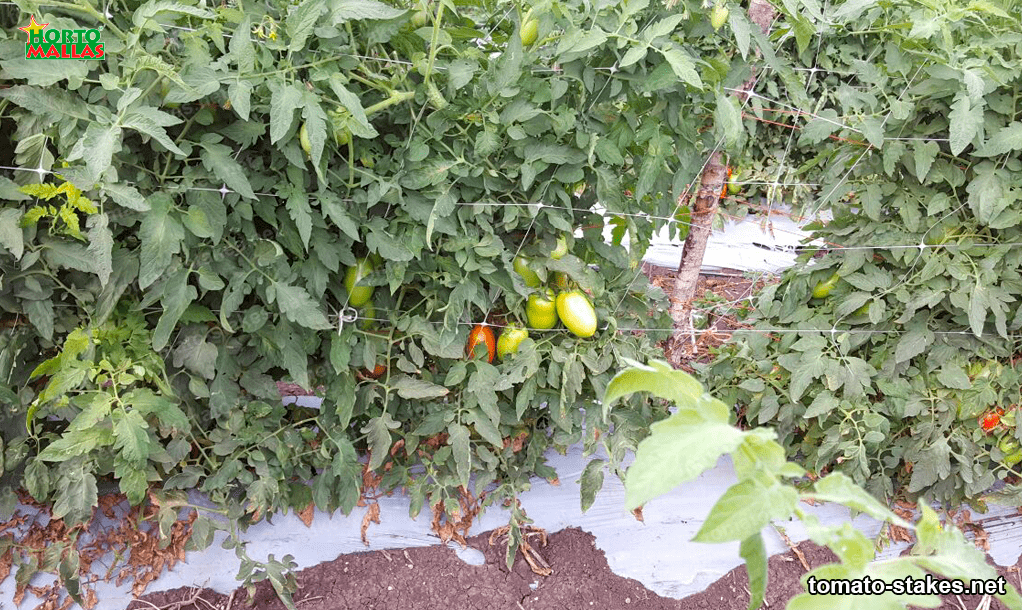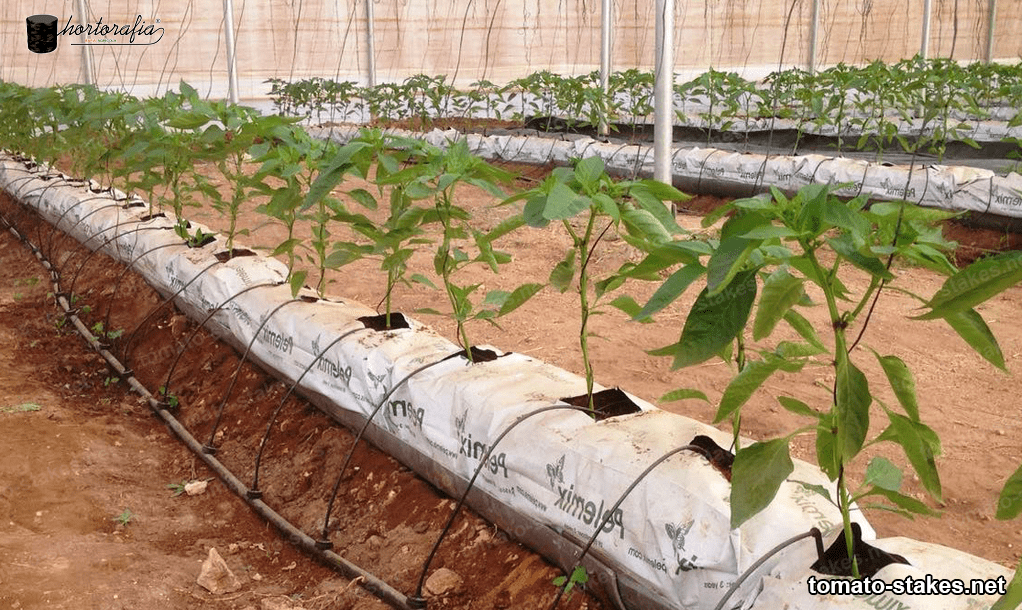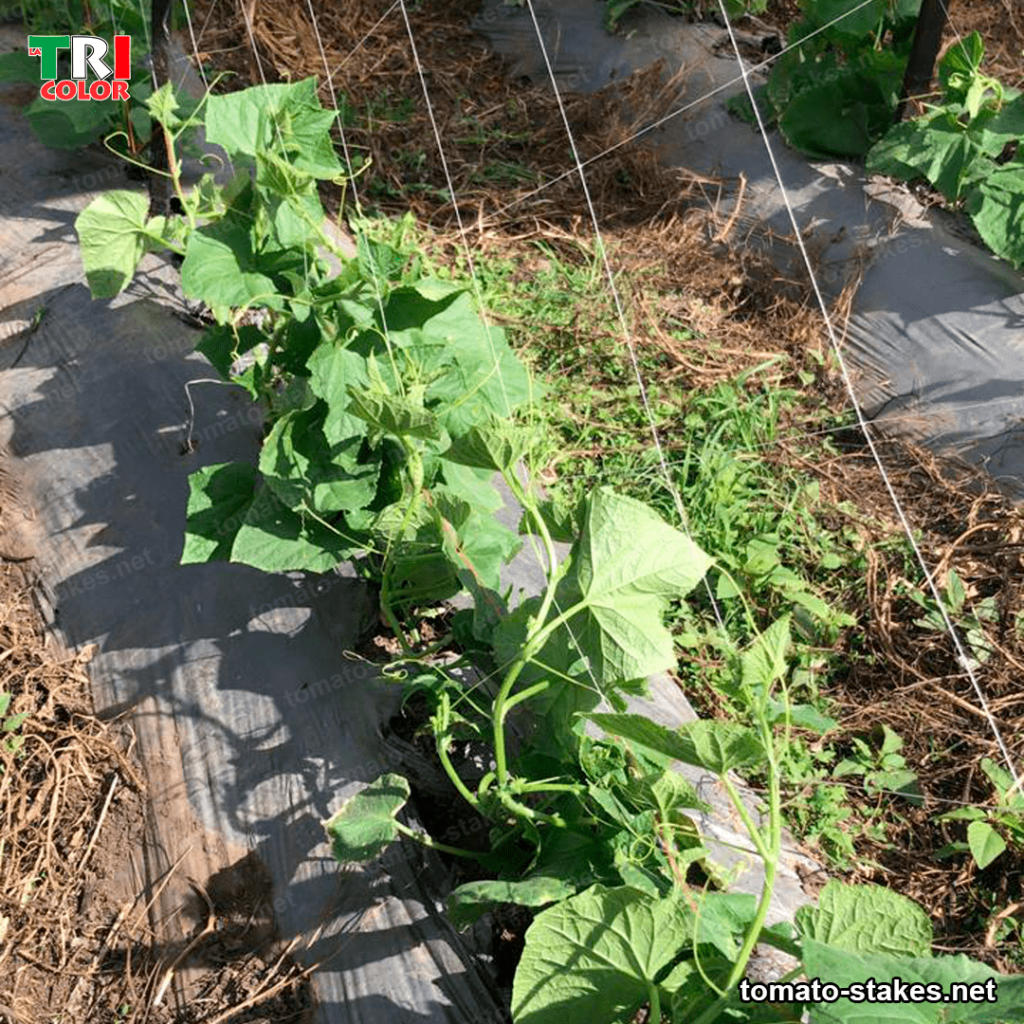Tomato stakes: The stake is a proposal that offers a more rigid and secure structure than the traditional leg and allows better air circulation between the stems and the developing fruits. As well as better irrigation. This avoids damaging the stems and roots when handling the plant, improves fruit growth and gives greater peace of mind during cultivation.
What is a tomato stake?
Usually, the stake for tomato cultivation is made of plastic thread or thin galvanized wire, which has a certain disadvantage because, depending on the quality of the materials. It may erode with the passage of time. Therefore, before assembling. It is good to carry out tests to make sure that the threads or wires used for this structure are made of materials that can withstand rainy and dry seasons with good stability.
.

The most important part of the stake are the hooks. These must be good and resistant, for which they are usually a little more expensive than the wires. They should be arranged on all three sides of the small structure with the hooks meeting at a height of about 25 cm. In this way, they will carry the full weight of the plant when the fruits reach maturity. The next step is to add a bolt to attach the plant to the hook, using a large clamp and welding it to the hook. This form of clamping offers more security than the hook alone, even if wind or rain damages the structure, the clamp will still stay in place.
For subsequent transitions, it’s all up to you. If you only plan to have a single tomato plant, you can keep the hooks and the clamp, if you want to have more plants or better circulation, you can add more wires. These should be the same materials as the ones initially used to avoid a breakdown of the structure. Then add wire around the base of the plant and fasten it with clamps to avoid breaking the stems. Finally, water the plant according to its needs to prevent the fruits and stems from drying out.
.
In this way, a stake has been created for tomato cultivation. These constructions offer greater security to the crops, allowing the gardener to have more peace of mind to take care of his plants. The materials are important to ensure that they survive the external or natural elements such as rain or extreme dryness. Which the “neighbors” of these crops are sure to get. Finally. Watering should be done according to the plants’ needs, so it is advisable to take into account the general climate and give them the care they deserve.
A tomato stake results in a popular form of support for a variety of plants, especially those with thinner, more spreading stems. These are plants such as tomatoes, peppers, cucumbers, broccoli and several others. Although useful for a variety of plants, tomato stakes are specifically designed to support tomato growth. This is because the tomato stem expands as the fruit ripens. Which means tomato stakes have to be boardable to support the weight of the ripening tomato.
.
They are typically made from materials such as wood, plastic, iron or wire. Wooden stakes are popular because they are natural and relatively easy to assemble. However, they are also susceptible to decay, which means they may not be a good choice if the plant is planted to live for many years. Plastic and metal stakes, on the other hand, are much more durable and will not rot over time. They also come in a wide variety of sizes and shapes. There are single, semi-circular and fully circular stakes, as well as multi-tiered stakes. Depending on the support needs of the particular variety of tomatoes. Tomato stakes can be used singly, group, consecutive, U-shaped, V-shaped, Y-shaped, T-shaped and even more complex.

When constructing tomato stakes, it is also important to consider the materials of the stake. Depending on the materials the stake is faced with, stakes must be constructed with adequate thickness and size to withstand the weight of the ripe fruit and high winds and storms. This means that the materials used in construction must be strong and weather resistant. Especially if the stake is placed in an area open to the elements. In addition. The materials must also be soft enough to allow the tomatoes to attach to the stake without damaging the stem.
.
When choosing tomato stakes, the location of the stake should be considered. Tomato stakes should be placed in a location with excellent exposure to sunlight, especially in the morning and evening. This will help ensure that the tomatoes receive the sunlight required for optimum development and ripening. In addition. It is best to place tomato stakes in a location protected from strong winds. Which can damage flowers and young fruit.
Tomato staking is a key element to any successful tomato crop. Stakes keep tomatoes healthy, serve as an indicator mark to monitor the progress of your crop and can be an excellent source of nitrogen for the soil .There are many types of tomato stakes to choose from. So understanding the pros and cons is important so you can decide for yourself which ones are best for your crop.
Below, we will review the three best types of tomato stakes to help growers choose the best one for their purposes. These are bamboo stakes, hardwood stakes and metal stakes:
.
1. Bamboo stake is a great choice for tomato plants since it is supplied as a strong, and very rot resistant stake. They are easy to drive into the ground and are pesticide free, making them 100% safe to use with tubers. They are ideal for supporting plants in place, without any stress on their stems. However, these stakes are flexible, so they will break if they lean too far. If you want a permanent bamboo tomato stake, you should replace it frequently to keep it sturdy.
2. Hardwood stakes are a little more expensive but offer greater benefits. They are made from oak, ebony, pine, cedar, goose and larch, among others. Hardwood stakes are rot resistant. Insect resistant, are not corrupted by soil or water and absorb nutrients very well for proper growth. The only disadvantage is that they can be tougher to drive in.
.

3. The last tomato stake to consider is the metal stake. Metal stakes are lightweight, durable and erosion resistant. They are ideal for use in rocky or hilly terrain. These stakes do not absorb any nutrients, so it is important that you add fertilizer for maximum results. The biggest drawback to these stakes is that they are prone to rusting, especially if most of your stakes are made of iron.
As you can see, there are a variety of materials available for making tomato stakes. When choosing the best one for your crop, you will need to consider the pros and cons of each type to decide which one best suits your farm. This way, you can get the best yield from your crop. These are the best tomato stakes: bamboo stakes, hardwood stakes and metal stakes.